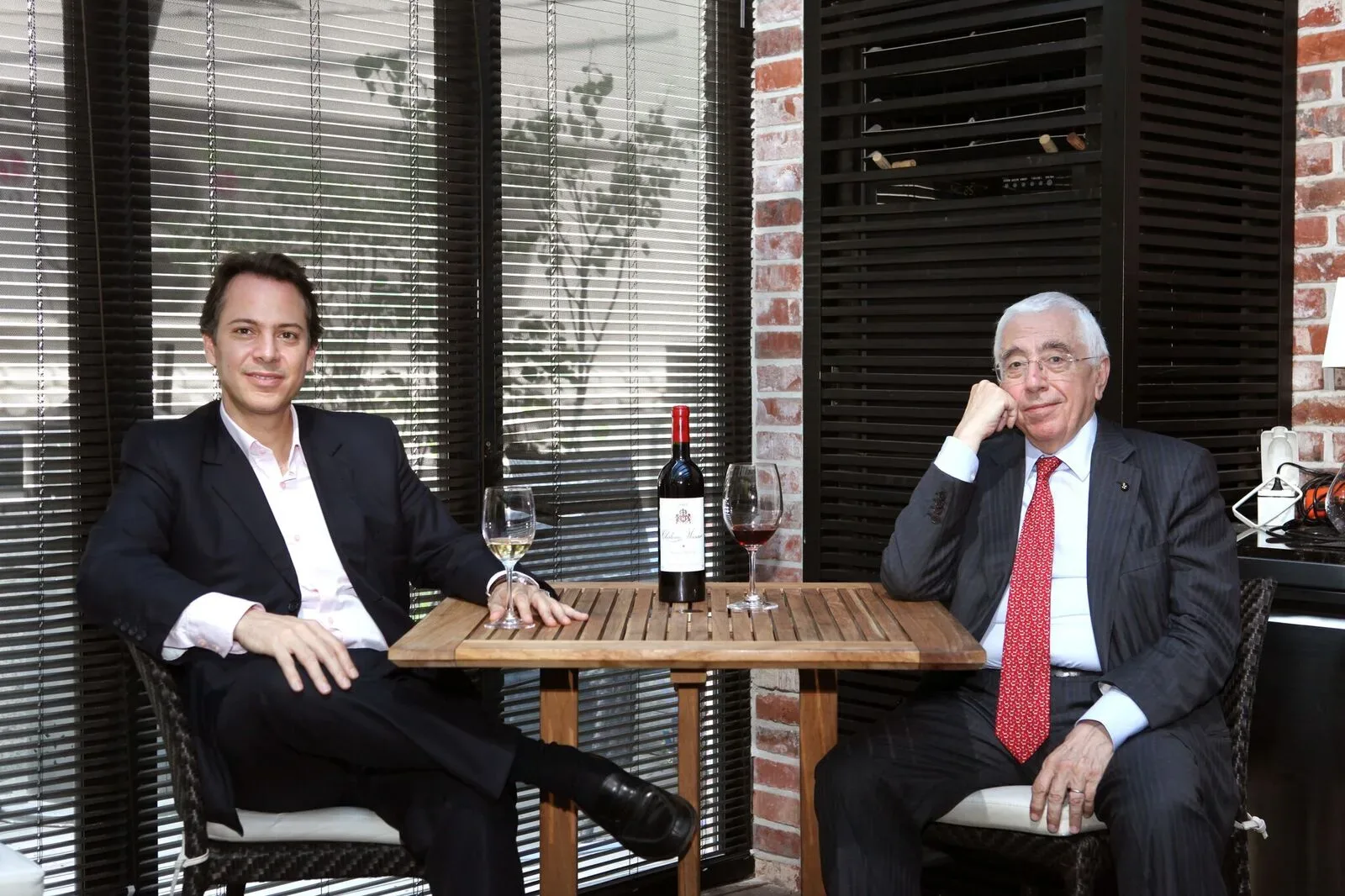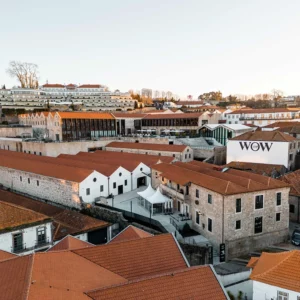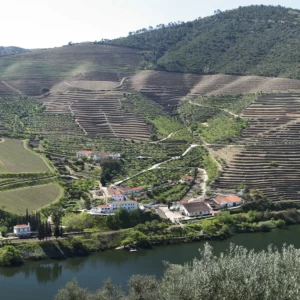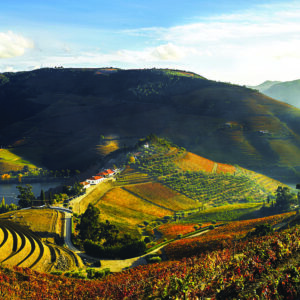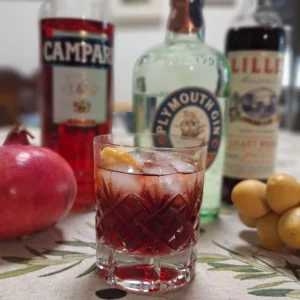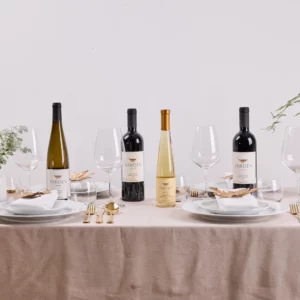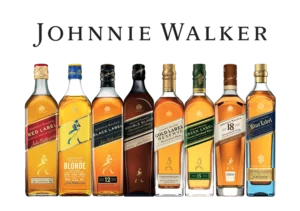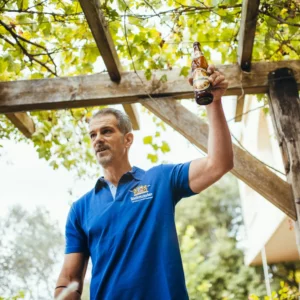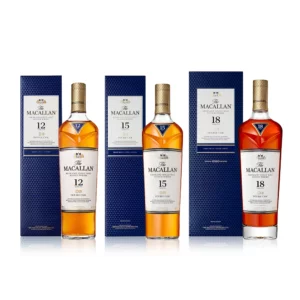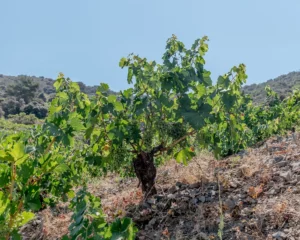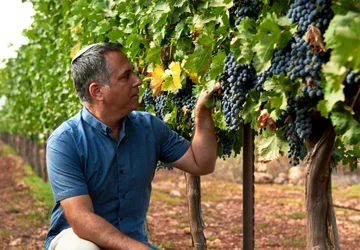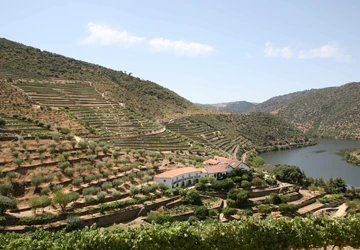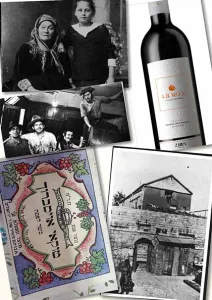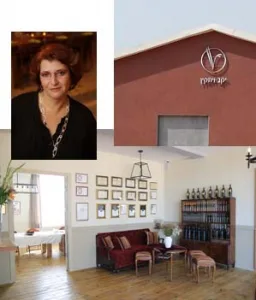The Eastern Mediterranean was the cradle of wine. This meeting place between south-eastern Europe and the Middle East was where wine culture began. That fertile crescent was good to wine and wine was good for trade and business. This was the place Noah planted a vineyard. Where Moses? spies were surprised by the size of grapes. This was where Isaiah, the most famous prophet, wrote his Song of Vineyard. The Egyptian wine culture, seafaring Phoenicians, Ancient Greeks and the Romans all made long lasting contributions to the both the region and the world?s wine culture.? The New Testament is full of wine references. Jesus changed water into wine here. Even later, Moslem poetry of a certain era was not shy about writing about wine. Do you remember Omar Khayyam?s ?A loaf of bread, a flask of wine? and thou?? Some of the most beautiful poetry about wine comes from the place you would least expect. However, that is all ancient history!
A modern wine industry in the Eastern Med was first flagged up by the founding of ETKO by Christodoulos Haggipavlu in 1844 (in Cyprus), followed by Ksara by Jesuits in 1857 (in Lebanon) and then Archaia Claus by Gustav Klaus in 1861 (in Greece). In Israel the revival of a wine industry, dates from the founding of Carmel by Baron Edmond de Rothschild in 1882. The first private wineries in Turkey were Doluca, founded by Nihat A. Kutman in 1926, followed by Kavaklidere, established by Cenap And in 1929.
That is not to say that wine was not made beforehand, but it was domestic winemaking and could scarcely be called a wine industry. Jews in Israel made wine from local varieties grown by Arab owned vineyards. They needed kiddush wine for religious ritual. Christians also made wine throughout the Eastern Med. They required Altar and Communion wine. Wine was often made by the woman of the household as a way to make use of the grapes they grew. Other uses, depending which country we are talking about, was to use the grapes for food, to produce raisins, to make a sweet grape syrup, or to distill the wine to make Raki or Arak. Furthermore, monasteries continued to make wine for their own consumption and to earn a living in the Eastern Med, as well as in Europe.
The Eastern Mediterranean of the 20th Century was dominated by large monopoly sized wineries, but the wine was not great. Wineries focused on inexpensive brands and high volume sales. The markets were dominated by Carmel in Israel; Achaia Clauss, Kambas, Kourtakis and Boutaris in Greece;? Tekel (the government monopoly), Doluca and Kavaklidere in Turkey; KEO, ETKO, LOEL and SODAP in Cyprus, and Ksara in Lebanon. In each case, the main objective was simply production and distribution, rather than branding or any pursuit of quality.
When I started in the wine trade, the Eastern Mediterranean was an historical and archaeological memory. The one thing it was not known for, was the quality of its wines. I remember a wine book written by wine critic Robert Joseph describing an Israeli Sauvignon Blanc as probably the worst wine he had ever tasted. A local wine in the sparse entry for Israel in an early Hugh Johnson Pocket Wine Book, was the semi dry red, Adom Atik. Hardly a wine to be proud of. Israeli wine was then oxidized. Reds were brown and whites deep yellow and sweet sacramental wine was still the dominant wine encountered.
Greek wine was probably symbolized by the liter bottles of Domestica, found on the back shelf display of Doner Kebab kiosks in London, or Retsina, the white wine flavored with pine resin, encountered by tourists. Their wines were mainly drunk by ex-patriots. Turkish wine was not on the radar at all. If the Turks drank anything, it was Raki. Nearly all their grapes were used to make raisins. Cypriot wine was very successful in terms of sales, punching well above its weight, but the objective was volume not quality. Cyprus Sherry (to Britain), bulk wine to the Soviet Union and Ghluwein to Germany were strong markets. Lebanese wine was regarded as quaint, but the dominant winery was owned by monks, and for a long time, decisions were under the thumb of the Vatican in Rome. In any case, the Lebanese far preferred Arak to wine. What seeped out was reserved for Arab restaurants.
Fast forward until today and I believe the Eastern Mediterranean is one of the most dynamic regions in the world. There has been a total turn around. The whole area is geared to growing and producing wine with individuality and quality in way unthought of previously. The heroes who brought about the change were catalysts to a new dawn in this Ancient World of winemaking, which in a couple of decades summersaulted into a new world of modernity, technology and quality.
The first winery to show the Greeks the way was Domaine Carras in Halkidiki. It was founded in 1966 and owner Ioannis Carras was determined to make a wine that would compete with the best in the world. Money was no objective. He employed the iconic wine consultant Emile Peynaud and originally planted Bordeaux varieties. Later they flirted with rare Greek varieties (including Malagousia). Carras employed the young Evangelos Gervassiliou, a student of Peynaud, as winemaker. He is today regarded as Greece?s most famous winemaker. By the mid-seventies, people realized that the idea of quality from Greece was something tangible that could be achieved in modern times. There followed the rise of the small winery with an internationally trained winemaker (usually trained in Bordeaux) and from the 1990?s Greek wine never looked back. Later Carras (now known as Porto Carras) got into financial difficulties and was sold, but by then the example of investing in quality and expertise, was already being followed by others who took the beacon and carried it forward. It was Yiannis Boutaris, who left the family firm to set up a small winery alongside a precious vineyard, who encouraged many to follow the boutique route. His pioneering winery was Kir Yiannis.
As for Lebanon, a Francophile called Gaston Hochar founded Chateau Musar in 1930. It became the best wine in Lebanon, but was scarcely known by most Lebanese, let alone anyone internationally. Wine was only drunk by the French residents in Beirut and furthermore, Lebanon was one of the minnows in a large world. That was until the Bristol Wine Fair in 1979, when Michael Broadbent MW of Christies, one of the iconic giants of the wine world, found the wine. The winery never looked back. Under the canny, charismatic and unique leadership of Serge Hochar, Gaston?s son, Chateau Musar began to be regarded as one of the great wines of the world and their success catapulted little Lebanon into the drawing rooms of a staid wine world, who were fascinated by the exotic idea of a wine from Lebanon and captivated by the charm of Serge, who became known as one the world?s great wine personalities. Today Lebanese wine is no longer a one winery country. It has a vibrant wine industry and many Lebanese wineries are making really fine wines. Gaston Hochar, who passed away before his time, would have been thrilled to see his wine be regarded as one of the great wines of the world. Sadly Serge is no longer with us, though he influenced everyone he met. Now another Gaston Hochar, the next generation, is at the helm.
In Israel, the story of the revolution was closer to home. In the early 1970?s Charles Loinger, then director of the Israel Wine Institute, hosted Professor Cornelius Ough, from UC Davis, in Israel. He toured around and was most taken with the Golan Heights. He saw the beginnings of an apple industry, noticed the volcanic soil and the high elevation. ?This? he noted ?would be good place to grow wine.? The roots of the revolution took place in 1976 when Moshavs (cooperative farms) and Kibbutzes (collecting farms) planted the first vineyards on the Golan Heights. In 1982 these pioneers decided to make an experimental Sauvignon Blanc from their vineyards. The results were pretty poor, but it was way ahead of anything produced in Israel at the time. So, in 1983 four Kibbutzes and four Moshavs formed a partnership to found the Golan Heights Winery.
The CEO of the winery was a canny Kibbutznik called Shimshon Welner, who had experience of apples but was new to wine. He sought the services of a wine consultant from California. They found the name Stern, and assuming he was Jewish, interviewed him. Peter Stern was not Jewish, but he was good enough to be the wine consultant for twenty years. During this time, he and Welner shook up the establishment. Winemakers were employed who were graduates from UC Davis. They brought New World technology to vineyard and winery. Decision making in the vineyard for the first time reverted from grower to the winery. Harvested was at night. Wines were fermented in temperature controlled stainless tanks. Aging was in small French oak barrels. It all seems obvious today, but then it was trailblazing.
Then there was their marketing. Beautiful labels were designed. Wines were priced up at a time when the market had crashed and wines were being offered in ?buy one, get one free? promotions. The Golan wines were purposely scarce. They were originally sold only to the King David Hotel and Tel Aviv Hilton and in export markets. At the same time, Yarden wines started winning trophies and Gold Medals in the major international competitions of the time. When wine lovers were invited to the vineyards to witness the night harvest, they had seen nothing comparable.
The Golan went on to introduce unique wine marketing events. Robert Mondavi was the guest of honor for a symposium. Golan Vintage Culinary Festival, the Yarden Award for Wine Service, and the founding of a wine school were new to Israel, and showed that the innovation was not just within the gates of the winery, but also outside. If you have not understood the picture, think of Robert Mondavi?s influence in the revolution in California. The Golan Heights Winery?s effect on Israeli wine was no less, albeit on a smaller scale. By the early 1990?s Domaine du Castel and Margalit Winery had been formed, and a flowering of small, boutique wineries began.
So, as we approached the end of the 20th century, Greece, Lebanon and Israel had reinvented themselves because of the pioneers mentioned, the inspiration they provided and the positive response of rival wineries. Turkey and Cyprus were initially left behind, but since then, they have also made great strides.
The roots of change in Turkey began in the 1990?s. Then, Gulor Winery and Sarafin were the first to planted noble varieties. The Sarafin project was higher profile. It was a joint venture between Guven Nil, who owned the vineyards and Ahmet Kutman of Doluca Winery, one of the oldest and largest wineries in Turkey. Kutman was the son of the winery?s founder and he had an international outlook having studied at UC Davis. Their initiative drew attention to Turkish wines internationally for the first time and symbolized a desire to kick it up a notch.
During this time, the Turkish wine industry seemed to develop mainly in the west of the country, in Thrace and the Aegean regions. Against the trend, the other prominent large winery, Kavaklidere Winery, quietly continued to make wine from then unfashionable varieties in forgotten regions.? They proudly and stoically focused on varieties like Bogazkere and Okuzgozu from the Eastern Anatolia and Kalecik Karasi, Narince and Emir from Central Anatolia. At this time, I had heard of two Turkish wines, Sarafin and beautifully named, Buzbag, a rustic blend of Okusgozu and Bogazkere.
Buzbag was made by Tekel, the government monopoly. In 2004 the wines and spirits producer was privatized and Kayra was formed. They appointed as their winemaker Daniel O?Donnell from California. This period coincided with the founding of a number of boutique wineries geared towards quality and the wine world, from Masters of Wine downwards, became fascinated with the Turkish local varieties for the first time. O?Donnell, being an English speaker was a natural communicator and became an unofficial spokesman for Turkish wine. Another high profile wine personality spreading the word is Isa Baal, a Master Sommelier and Best Sommelier of Europe, who made it to the top in the closeted world of the restaurant business.
It is sad to report that Turkish winemakers of today put up with unbelievable government restrictions and a vociferous, official anti-alcohol lobby. This at a time when the wines have never been better. All wine lovers should support the courage and determination of Turkey?s wine producers.
The wine industry in Cyprus was rocked to its core by a number of changes. The outlawing of the word ?Sherry? outside Spain, the collapse of the Soviet Union and joining the European Community meant that export markets collapsed and Cyprus opened itself to competition. The high volume production days are over. As a result, the Cypriots have become more quality orientated. Like in Israel, where the wine industry moved northwards and eastwards in search of higher altitudes, the Cypriots moved to the Troodos Mountains and as families abandoned vineyards because of declining demand volumes, the quality wineries began to grow and manage their own vineyards.
Here, there are two heroes. Firstly, the late Akis Zambartas, the CEO of the giant KEO, found, identified and revitalized the country?s little known, disappearing indigenous varieties. Today other wineries benefit from his vision. He later founded Zambartas Wineries, now run by his son, Marcos, which is regarded as one of the leading wineries in Cyprus. The other was Sophocles Vlassides. He came from a family of grape growers, but was the first to leave the comforts of the Island?s traditions. He went to study in UC Davis in USA and returned to set new standards at his top notch Vlassides Winery. He planted his own vineyards, invested in small French oak barrels and built a beautiful state-of-the-art winery. He assisted the Tsiakkas and Argyrides wineries as wine consultant and proved to be an inspiration to the industry as a whole as it started to change gear.
In case anyone feels they know the region well, the more one scratches the surfaces, the more nuggets may be found. Arguably one of the finest wines of the region is Domaine Bargylus made in Syria. There are also good Jordanian and Palestinian wineries. What makes it all the more interesting to the wine historian, is that these three places each have a very long history of winemaking amongst their Christian population.
Today every Eastern Mediterranean country is making the best wine it has made for the last 2,000 years. Increasingly, each of the countries are attracting a new type of owner, who are investing enormous sums of money in order to make high quality wine from the get go. We should be grateful to those pioneers that created change and inspired the new thinking in their respective countries. The Eastern Mediterranean is at the same time, the newest and most ancient wine region: A whole new world of wine, in one of the most ancient wine producing regions on earth.
Wine trade veteran Adam Montefiore, has been advancing Israeli wine for over thirty years and he is the wine writer for the Jerusalem Post. www.adammontefiore.com


